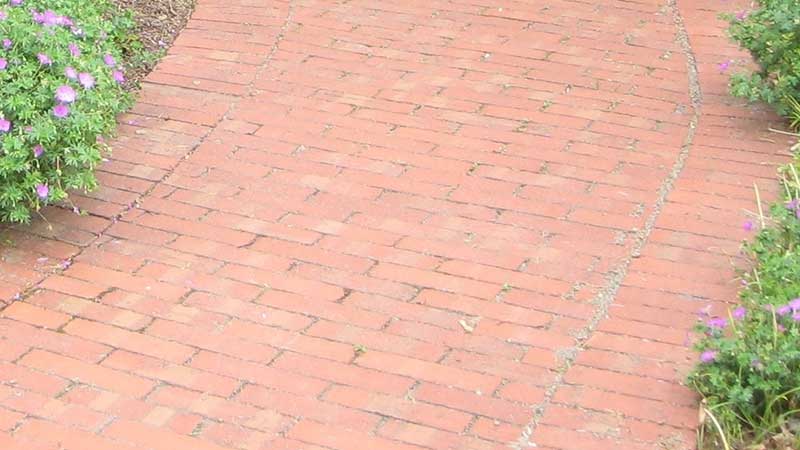
While cruising the garden this morning to visit a few perennials still in bloom (‘Honorine Jobert’ Japanese anemone and ‘Hillside Black Beauty’ bugbane), I had the distinct impression that the paving stones on the front path were shifting under my feet. And they were! This sometimes happens in spring following a heavy snow melt when the trickling water carries away jointing sand between the front pavers and erodes the sand from the flagstone path at the side. I dump a few shovelfuls of sand on the paths when it’s cool and dry, and use a broom to brush it in between the stones. The spaces are filled again, and the stones are stationary for another season.
But the current shifting stones are the result of the repeated heavy downpours we had this past summer that have deeply eroded the sand between the pavers and flagstones. If I leave these spaces open over winter, ice will expand between and underneath, and I’ll be dealing with open joints and heaved stones that only a mason could properly settle. This is a case where an ounce of prevention will save a lot of work and possible expense next spring.
Brushing sand into joints between pavers, stone or vitrified brick joints is pleasant work if you choose a bright day with not too much wind. I initially brush the sand across a section of the path, and watch for where it falls through and disappears. These spaces are deeply eroded and will require a second shovel of sand and several more sweeps of the broom.
It’s important to use the correct kind of sand, and there are two choices, both to be found at a building-supply centre. Sharp builder’s sand (also called construction sand or jointing sand) works fine, but in my experience, it needs to be done twice a year if this is the sand you choose. I’ve found it’s worth the greater purchase price to use a polymeric bonding sand (sometimes called stabilizing sand), which is longer lasting in the seams and needs to be renewed only once a year. This is coarse sand with the addition of a polymeric gel activated by moisture. Once brushed into joints between stones, water will harden the sand, keeping it in place and preventing erosion. The hardened sand in the joints also denies weed seeds a soft bed in which to germinate.
Use polymeric bonding sand on a dry day with no rain in the forecast, and make sure the tops of the the stones are dry. Brush the sand into the joints, being sure to fill all spaces, and then sweep up and save any extra sand that hasn’t gone into the seams. (Any polymeric sand that falls on plant beds won’t cause a problem, and easily disappears into the soil.) I use a light sprinkling from the hose to gently wet the paths and allow some water to reach the sand between the stones. A gentle spray prevents dislodging sand before it has a chance to harden. And that’s it. The paths are firm again and all’s right in the garden.








